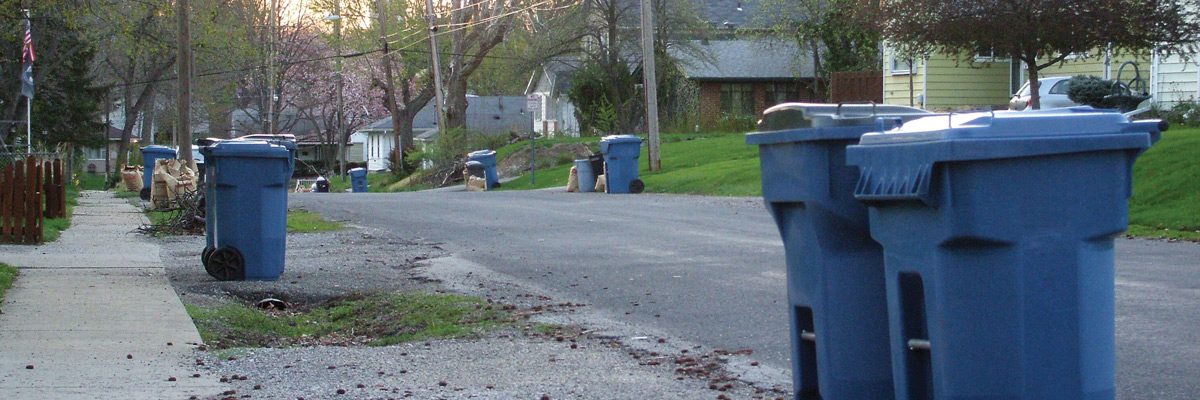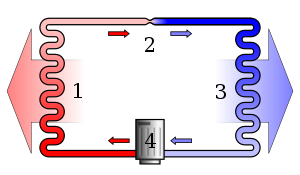That’s right for you rap fans Hump up to the Heat Pump, Jump up to my Heat Pump it’ll burn you baby!…Well maybe not. The idea behind a heat pump is temperature differential. When its cold outside you throw heat inside because the fluid is colder than the cold and when its hot outside you throw heat out side because the heat is hotter then the hot. Well let’s let the experts explain…
http://en.wikipedia.org/wiki/Heat_pump
According to the second law of thermodynamics heat cannot spontaneously flow from a colder location to a hotter area; work is required to achieve this. Heat pumps differ in how they apply this work to move heat, but they can essentially be thought of as heat engines operating in reverse. A heat engine allows energy to flow from a hot ‘source’ to a cold heat ‘sink’, extracting a fraction of it as work in the process. Conversely, a heat pump requires work to move thermal energy from a cold source to a warmer heat sink.
Since the heat pump uses a certain amount of work to move the heat, the amount of energy deposited at the hot side is greater than the energy taken from the cold side by an amount equal to the work required. Conversely, for a heat engine, the amount of energy taken from the hot side is greater than the amount of energy deposited in the cold heat sink since some of the heat has been converted to work.
One common type of heat pump works by exploiting the physical properties of an evaporating and condensing fluid known as a refrigerant.
A simple stylized diagram of a heat pump’s vapor-compression refrigeration cycle: 1) condenser, 2) expansion valve, 3) evaporator, 4) compressor.
The working fluid, in its gaseous state, is pressurized and circulated through the system by a compressor. On the discharge side of the compressor, the now hot and highly pressurized gas is cooled in a heat exchanger called a condenser until it condenses into a high pressure, moderate temperature liquid. The condensed refrigerant then passes through a pressure-lowering device like an expansion valve, capillary tube, or possibly a work-extracting device such as a turbine. This device then passes the low pressure, barely liquid (saturated vapor) refrigerant to another heat exchanger, the evaporator where the refrigerant evaporates into a gas via heat absorption. The refrigerant then returns to the compressor and the cycle is repeated.
In such a system it is essential that the refrigerant reaches a sufficiently high temperature when compressed, since the second law of thermodynamics prevents heat from flowing from a cold fluid to a hot heat sink. Similarly, the fluid must reach a sufficiently low temperature when allowed to expand, or heat cannot flow from the cold region into the fluid. In particular, the pressure difference must be great enough for the fluid to condense at the hot side and still evaporate in the lower pressure region at the cold side. The greater the temperature difference, the greater the required pressure difference, and consequently more energy is needed to compress the fluid. Thus as with all heat pumps, the energy efficiency (amount of heat moved per unit of input work required) decreases with increasing temperature difference.
Due to the variations required in temperatures and pressures, many different refrigerants are available. Refrigerators, air conditioners, and some heating systems are common applications that use this technology.
A HVAC heat pump system
In HVAC applications, a heat pump normally refers to a vapor-compression refrigeration device that includes a reversing valve and optimized heat exchangers so that the direction of heat flow may be reversed. The reversing valve switches the direction of refrigerant through the cycle and therefore the heat pump may deliver either heating or cooling to a building. In the cooler climates the default setting of the reversing valve is heating. The default setting in warmer climates is cooling. Because the two heat exchangers, the condenser and evaporator, must swap functions, they are optimized to perform adequately in both modes. As such, the efficiency of a reversible heat pump is typically slightly less than two separately-optimized machines.
:}
Everyone sells them..everyone:
http://www.searshomepro.com/hvac/options.aspx?lst=352
If you want a quote on one:
http://www2.qualitysmith.com/heat_pump
http://www.servicemagic.com/sem/category.Furnace-Central-Heating.10335.html
or if you just want to look:
www.residential.carrier.com/
www.trane.com/Residential/Products/HeatPumps.aspx
www.rheemac.com/home_cooling_pump.shtml
www.nhec.com/residential_residentialheatpumps.php
:}
:}


